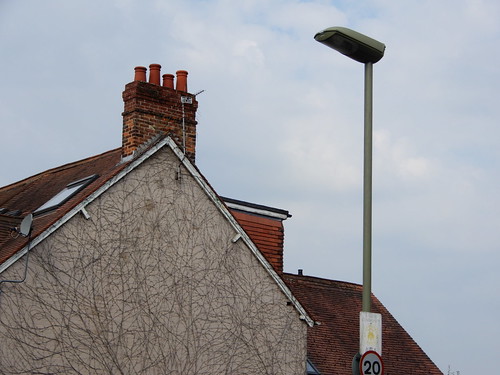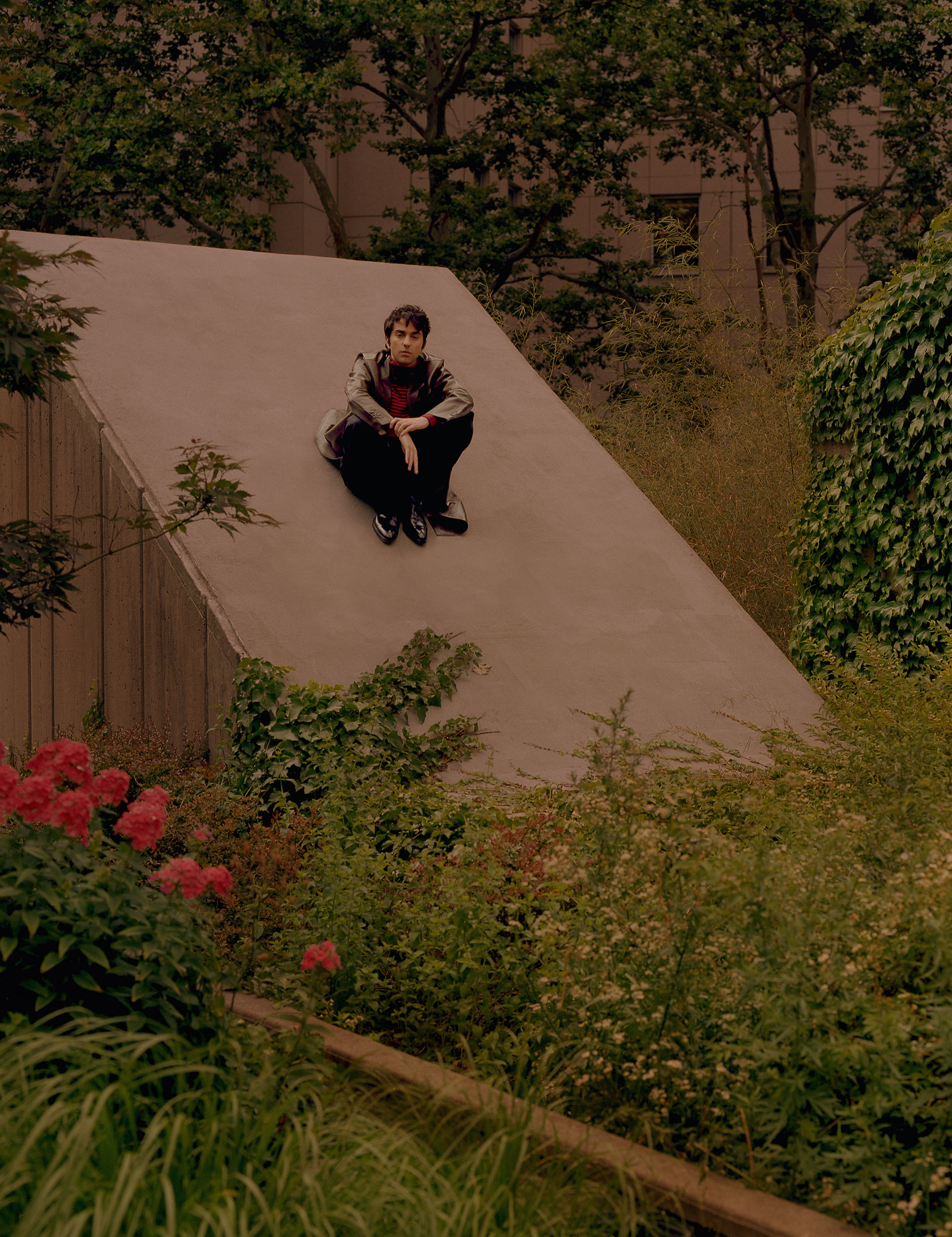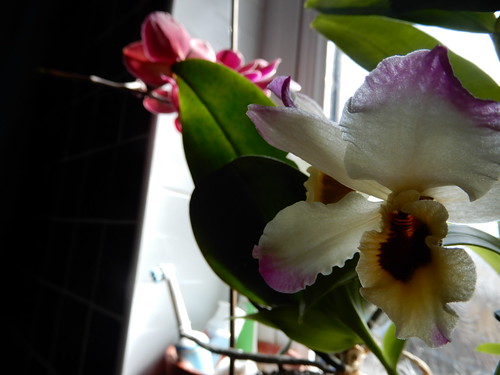When you're up here, and doing this, what should a person do?


Spot out the capital's amazing and expanding roster of green roofs and roof gardens of course!
I like these: functional, industrial green, green that's put in alongside the aircon and the liftshaft, to service the needs of the building. It's brown at this time of year of course and intentionally; that doesn't mean it's dead. It's drought-tolerant.


But how about this green island in the sky? There is always room at the top! Mediterranean planting, curvy benches, a human-accessible roofspace with a view across the solar-panel field. Optimised roof; there's even a dramatic light well in the middle.

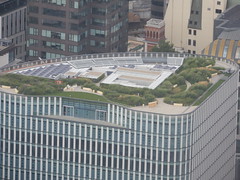
The planting is
très modern, too. But here's a more trad park space, with deck-chairs and borders, umbrellas and awnings and cloud cut hedges and lawns, which must be watered, perpetually.


Not many people here, though. Where are the people? They're having a meeting. They're eating their lunch. On balconies de-bleaked by hedges and troughs and planters shading in green into their peripheral visions. It's mid-week, mid-summer; time for shirt sleeves, weekend sunburn, frayed tempers.


The concept of a "garden room" is powerful. Here and there the roof greenery reflects the surrounding architecture; a green grid echoing back the squares of the towerblock windows, green pits creating a solemn echo of giant domed solars.


Green doesn't always stay on the roof, of course. Green wall one is a burgeoning creeper; green wall two is cladding designed to look like the building has a creeper. I'd be annoyed but look at the roof. It's got green walls and a green roof, albeit the functional, non-accessible kind.


But green spaces don't have to be huge projects. Look at this tiny garden crammed into rooftops, or the pair of beehives shoved in the corner of a commercial roofspace. In spaces where you can only agree to green up a tiny corner, it can still work well.

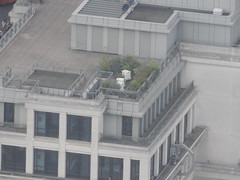
Or you can bring in the astroturf and Cordylines - the plant which could always be plastic or real.
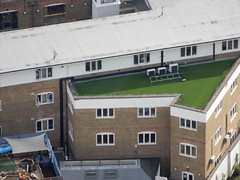
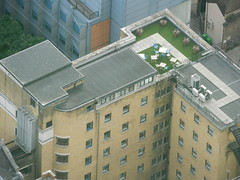
The wharf houses sprouting rooftop gardens, back-gardens in the sky, communal and personal and shaded and sheltered in the warm Thamesside microclimate.


Wild meadows tucked onto the tops of building blocks, as if someone had introduced a grass block onto a towertop in Minecraft.
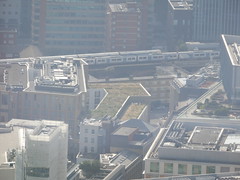

Elevated train lines creating storey-up waste ground, thick with native weeds, mice, birds.


Balconies and roof-scraps pressed into service as skygardens sheltering and softening and covering domestic life in the city.


And as to what's coming next; well, it's under construction. But there's a green roof on it.





